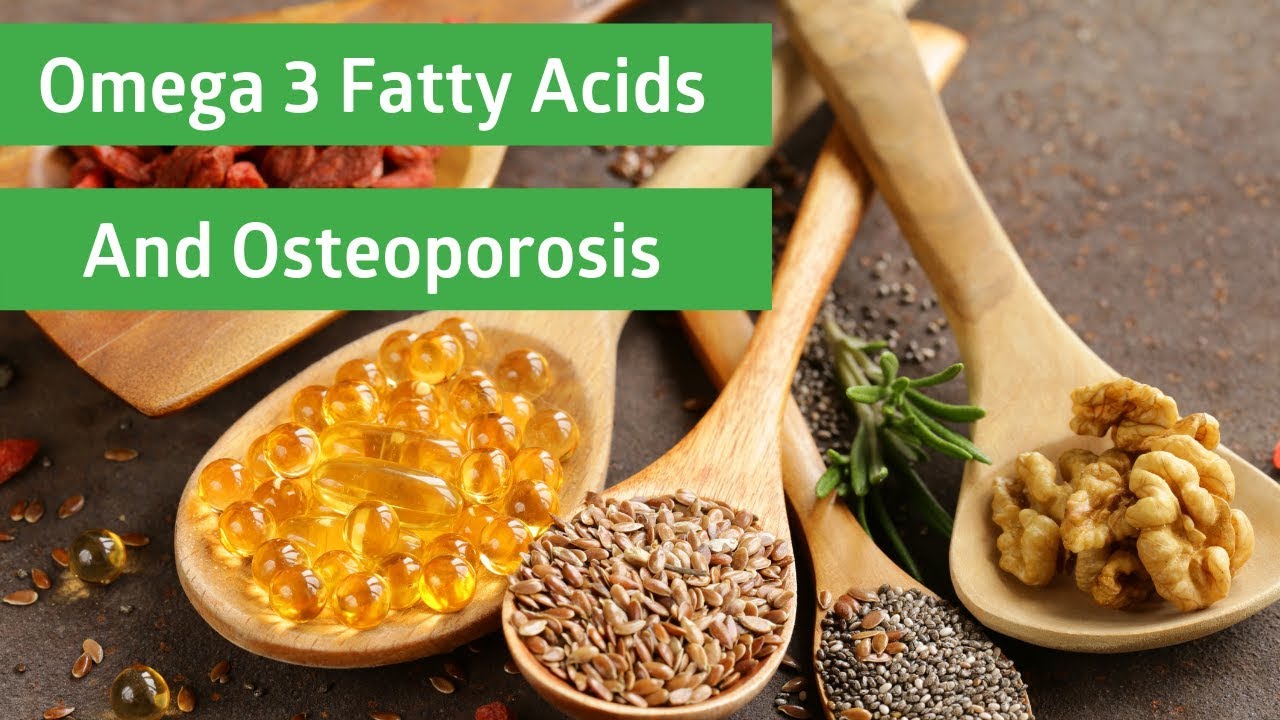Monica Straith, BS
October 9, 2018
Fat isn’t your body’s public enemy #1 like you were taught it is.
Sure, the unhealthy trans fats in processed foods are definitely on the “foods to avoid list.” After all, they cause cardiovascular disease and obesity. But not all fat is out to get you.
In fact, some fats are actually out to help you…
They might not get the same level of attention as the bad fats, but omega 3 fatty acids work wonders for your entire body. You may have heard that omega 3 fatty acids can help reduce your risk of cardiovascular disease, ease the pain in aching joints, and protect your brain against age-associated cognitive decline. Not a bad resume, right? But it gets a whole lot better.
Omega 3 fatty acids also play a key role in your bone health and may even help protect you from osteoporosis! So, if you lack omega 3 fatty acids, you’re missing out on a whole host of health benefits.
I’ll cover how omega 3 fatty acids can help protect you from osteoporosis in just a moment. But first, let’s take a step back and look at essential fatty acids in a slightly broader sense.
What Are Essential Fatty Acids?
You need fats to keep functions from your brain to your toes running smoothly. And different functions need different fats.
Your body can make some of these fats itself, but not all of them. So you need to give your body a helping hand by providing them via your diet. These are called essential fatty acids. And the omega 3s are one of these essential fatty acids.
The History of Omega 3s and Omega 6s
The Husband-and-Wife Team Discovery
The husband-and-wife team of George and Mildred Burr discovered essential fatty acids in 1929. But the discovery wasn’t what they intended…
The Burr’s were initially trying to show that vitamin E is vital for reproduction, by feeding a group of rats a vitamin E-free diet. But the rats in their study were not always sterile. So the Burr’s came to the conclusion that some of the fat in the rats diet must be providing some vitamin E.
In the next stage of their research, the Burr’s removed all fat from their rats’ diet too. But they stumbled upon a whole new discovery…
After several months without dietary fat, the Burr’s rats developed scaly skin, their tails became inflamed, their paws reddened, and their fur was full of dandruff. The animal’s fur fell out soon after, they lost weight, and eventually, they died. George and Mildred concluded that fat is an essential part of diet for the maintenance of normal physiological function and the prevention of disease… Not just a source of energy as was previously thought.
George and Mildred weren’t finished there though! They wanted to unearth exactly what it was about dietary fats that’s so vital. The Burr’s continued their research and published another paper in 1930. They proposed that only one fat could be missing from the diet that the body could not make itself– linoleic acid. The Burr’s described linoleic acid as an essential fatty acid, and the term was born!
Essential Fatty Acids As We Know Them Today
George and Mildred Burr’s discovery was groundbreaking. But their proposal that linoleic acid is the only essential fatty acid was incorrect. In fact, George himself was part of the team that discovered alpha-linolenic acid is also an essential fatty acid.
And so the foundation of what we know about essential fatty acids (and their effects on bone) was laid. Since George and Mildred’s discoveries, research has uncovered the link between alpha-linolenic acid and linoleic acid and the omega 3 and 6 fatty acids:











